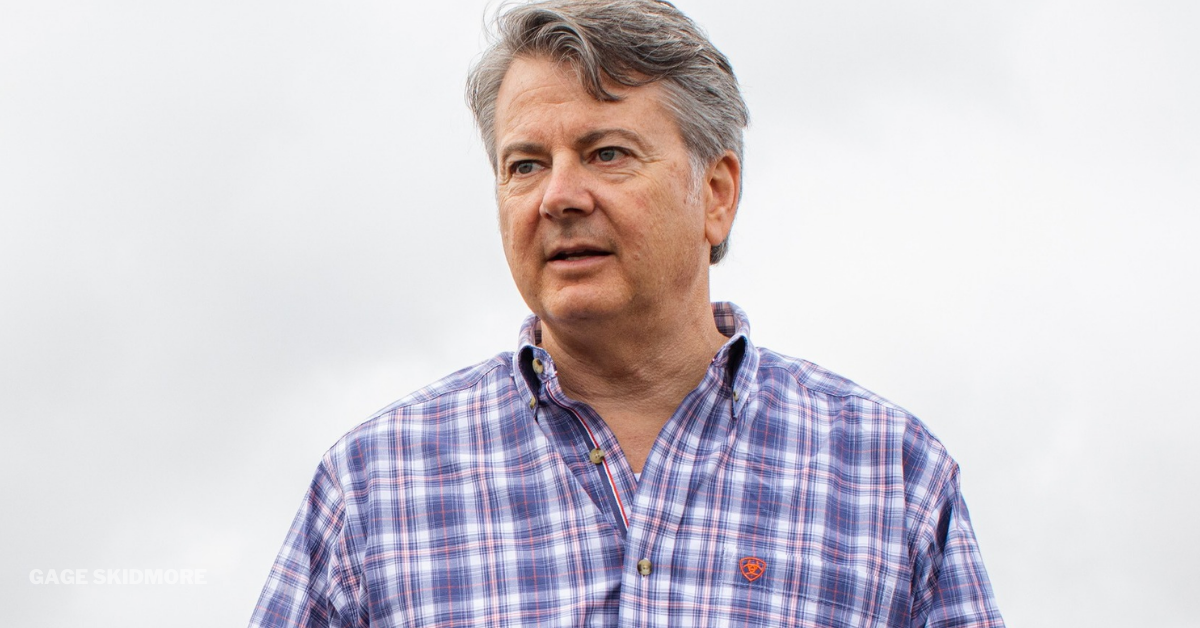Tommy Esqueda used one of his favorite words – engineer – in explaining both the beauty and the challenge of our El Niño winter.
“There is an advantage,” Fresno’s Public Utilities director told me last week, “in having an impervious surface and being able to engineer so that it goes over here or over there.”
Esqueda was talking about water, specifically the water that comes as rain. And he was unabashedly using “engineer” in my favorite context – humanity employing its smarts to turn Mother Nature into an ally.
I’ll explain Esqueda’s quote. But first some background.
Esqueda and I were sitting on a bench outside the City Council Chamber on the afternoon of Wednesday, Jan. 20. We were talking about two storms that had come through in the preceding three days.
We’d received 1.4 inches of rain within 72 hours. What a blessing!
Esqueda has been at City Hall a mere 19 months. But it’s been a wild ride. He’s led Public Utilities through the fourth year of a historic drought. He helped guide City Hall through a series of dramatic community water forums, He gave the City Council all the facts it needed to approve rate increases to pay for Mayor Ashley Swearengin’s $429 million upgrade to the city water system.
And that’s not counting the legislation that came down from Sacramento – laws that will revolutionize how we consume water and whose implementation will fall on the shoulders of local officials.
It’s no exaggeration to suggest Esqueda spends nearly every waking moment thinking about water.
Then, in a 72-hour span in the middle of a cool January, Fresno got 1.4 inches of rain. Most of the news reports focused on how those two storms boosted our seasonal rain total to 8 inches, more than we got in any full season over the past four years.
My thoughts went a different direction. I wondered: “How much water fell on Fresno during those 72 hours? And what did Tommy Esqueda do with it?”
I know – the second question is bit presumptuous. But, as you’ll see, it serves a purpose.
An acre foot of water is a common unit of measurement in our Valley. It represents 12 inches of water on an acre of land – 325,851 gallons. Rounded off, 326,000 gallons.
One inch of water spread over an acre is 27,167 gallons. That means 1.4 inches of rain would deposit 38,034 gallons on an acre of land (1.4 x 27,167).
Fresno is about 112 square miles in size. We’ve got lots of county islands inside the city, some of them of considerable size. I live in one of them near Bullard High School.
My thinking – the City of Fresno with its county islands is roughly 140 square miles. That’s roughly 90,000 acres.
I love that word “roughly.” I will stay with it.
We multiply 38,000 (roughly the number of gallons of water that 1.4 inches of rain deposits on an acre) by 90,000 (roughly the number of acres in metropolitan Fresno) and we have an answer to my first question.
Roughly 3.4 billion gallons of water fell on Fresno during that 72-hour period. That’s roughly 10,000 acre feet.
I know – there are lots of variables. Some parts Fresno no doubt got less than 1.4 inches from the two storms. Some got more. I go back to “roughly.”
By any accounting, 10,000 acre feet of rainwater in such a short span is a lot. Fresno in the not-so-distant past consumed about 150,000 acre feet in a year. We’re doing much better on the conservation front. We’re now in the 110,000 to 120,000 range.
Where do we get our water? After all, we need more than just what falls within our city boundaries in the course of 12 months.
Valley natives have always had a rough notion of the answer: The Sierra Nevada, lakes, canals, the aquifer. They’re all part of a storage/distribution system that seems to have been around forever.
The four-year drought and the city’s water forums in 2014 greatly focused our minds. The system is more fragile than we thought. “Every drop counts,” Esqueda says, echoing sentiments of Patrick Wiemiller and Martin McIntyre, his illustrious predecessors at Public Utilities.
So, even though Fresno in a normal rain year can draw on the considerable resources of the Sierra Nevada, we’re rapidly transitioning into water-saving mode.
Which brings us back to my second question: What did Esqueda do with that 3.4 billion gallons of water that Providence dropped on us during 72 hours last week?
And that’s exactly how I approached the issue as Esqueda sat on that bench outside the Council Chamber: “Tommy, what did you do with it?” That’s all he needed to dive into the concept of “engineering.”
First of all, he accepted my basic math.
“That sounds about right,” he said of 3.4 billion gallons/10,000 acre feet.
Then he told me a story.
“Yesterday (Tuesday, Jan. 19) I had a meeting at the wastewater plant,” Esqueda said, referring to the sewer farm about five miles west of town on Jensen Avenue. “I drove out there and it was raining. You know, Jensen is a little elevated. I could see all the fields – grapes and olives and almonds. Everything. And all these fields were flooded. I thought: ‘This is so awesome.’
“That was in the morning. I had to go back out there this morning. Every field was dry. It all soaked right into the ground – so beautiful and wonderful. That’s where all the water is going.”
I apparently had my answer. The 3.4 billion gallons, the 10,000 acre feet, got sucked up by the same Valley dirt that is home to an aquifer ranked among the wonders of the world.
But there was no need to go to someone like Esqueda – a professional engineer, a 30-year veteran of the nation’s water wars – to get such an obvious answer. We all know dirt can soak up water.
But metropolitan Fresno is different than a farm.
There was a stretch some 15 to 20 years ago during which some of my colleagues at The Bee got on a Fresno-has-too-much-asphalt-and-concrete kick.
The city was growing fast to the north and west. Farmers were happily selling their vineyards for top dollar and retiring (with nary a twinge of guilt) to Morro Bay. Developers were turning farmland into residential/commercial rooftops, concrete patios/driveways, and huge asphalt parking lots.
Of course, Fresno developers had been doing the same thing since the end of World War II. The result, my newsroom friends wrote (often and with passion), was a Fresno darn close to being 100% rooftops, concrete and asphalt.
They left unmentioned that rooftops, concrete and asphalt are impervious surfaces when it rains. There was no need to, not when rooftops, concrete and asphalt were contrasted throughout the stories with trees, shrubs and flowers.
All that went through my mind when I said to Esqueda: “Tommy, I’ll bet at least half of Fresno is something hard – roofs, roads, parking lots, things like that. Tell me about your flood control system.”
Old-timers remember how even a modest storm or two would flood significant portions of Fresno. Water seeks its own level, as the saying goes. Left to its own devices, rainwater pools in the most maddening places.
First of all, Esqueda told me, the local flood control system largely belongs to the Fresno Metropolitan Flood Control District. We’re talking underground pipes and storm water storage basins.
Fresno Irrigation District with its system of canals plays a key role. So does City Hall by requiring developers to install gutters that funnel storm water to the Flood Control District’s underground pipes. (Another key player, Esqueda said, is a Public Works Department that, in the midst of driving rain, keeps the gutter drains free of rubbish.)
Second, Esqueda, said, the Flood Control District, Fresno Irrigation District and City Hall are working as a team to retain as much rainwater as possible.
Third, Fresno Irrigation District’s Herndon Canal is the city’s safety valve for sending excess rainwater to the San Joaquin River. Esqueda said the irrigation and flood control districts are doing all they can to send nothing to the river.
Fourth, Esqueda said, City Hall, Fresno Irrigation District and the Flood Control District are using their sophisticated system of gutters, drains, pipes, canals and storage basins to collect huge amounts of water rolling off Fresno’s rooftops, patios and parking lots so it all can be recharged into the same aquifer that has taken such a pounding during four years of drought.
Esqueda wouldn’t guess how many of the 3.4 billion gallons of rain that fell on Fresno last week ended up in the recharge basins.
“I’m going to say it’s a pretty high percentage,” he said. “We’re not getting much evaporation.”
Then Esqueda raised another interesting point that goes back to those old Bee stories about the “tragedy” of Fresno’s fondness for concrete and asphalt.
Esqueda took those two trips to the sewer farm. The first day, he saw the flooded fields. Twenty-four hours later, the fields were dry. The water had soaked into the ground.
Would the aquifer have benefited just as much if Fresno had no concrete and asphalt, and all of the rain had soaked into the ground where it fell rather than being routed through an elaborate collection system to big recharge basins?
Probably not, if I correctly understood Esqueda.
Esqueda said the groundwater level is roughly 130 feet below the surface. It can take considerable time for surface water to percolate that far – maybe six months to a year.
There are variables, of course.
One is the type of soil. Some parts of Fresno have rather porous soil. In other parts of town, it’s hard. If you don’t believe the latter point, head to Forestiere Underground Gardens.
The recharge also is aided by saturated ground. Esqueda is a wonderful story-teller, and I’m not able to recapture how he uses words and hand movements to explain how seeping water weighs on seeping water to push the precious liquid down, down, down.
But if you can keep the earth saturated, then add more water, the groundwater level will slowly rise. “130, then 129, then 128 and so on,” Esqueda said.
And that’s what everyone wants – a replenished aquifer. It’s our reserve in times of drought. On top of that, replenishing (and conserving) the aquifer is now state law.
Esqueda didn’t say it in so many words, but the picture was crystal clear to me.
The 1.4 inches of rain that fell in my backyard and disappeared into the ground probably won’t hit the aquifer until mid-century, if ever.
The 1.4 inches of rain that fell on my rooftop went to the gutter, through the flood control pipes and into a recharge basin somewhere in north Fresno. The 1.4 inches of rain that fell on lots of other rooftops made a similar journey. That recharge basin, maybe five or 10 acres in size, soon had a collection of rainwater 10 feet deep.
The aquifer got supercharged, thanks not only to the collection system created by the Fresno Metropolitan Flood Control District, Fresno Irrigation District and Fresno City Hall, but also to millions of square feet of impervious surfaces built by folks named Kashian, Assemi, Bonedelle, Wathen, Frazier, McDonald and many others with proud histories of development.
Finally, I return to Esqueda’s quote at the start of our story: “There is an advantage in having an impervious surface and being able to engineer so that it goes over here or over there.”
What he means by “over here or over there” is that, even among recharge basins, they’re not all built the same. Some are so slow that they’re almost like storage basins. Others are so porous that it’s almost like sending the water far below the surface on an elevator.
Esqueda said City Hall, Fresno Irrigation District and the Flood Control District are talking about how best to ensure the most porous basins have a steady supply of water after a big storm. That means pumping water from the “storage” basins when the time is right. That means figuring out how to pay for the pumping bill.
“We’ll get there,” Esqueda said.
With an assist from the unsung Big Three – rooftops, concrete and asphalt.










